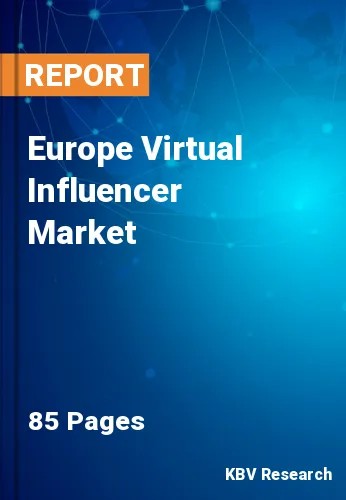The Europe Virtual Influencer Market would witness market growth of 37.8% CAGR during the forecast period (2023-2030).
They are evolving beyond generic characters, with a growing emphasis on hyper-personalization. Brands use AI algorithms to tailor virtual influencers to individual consumer preferences, creating more authentic and relatable connections. Integrating AI and deep learning technologies is enhancing the capabilities of these influencers. This allows for real-time interaction, natural language processing, and adaptive behaviors, making these entities more dynamic and engaging. A significant trend in these influencers space is promoting diversity and inclusivity. Brands are creating virtual influencers representing a broad spectrum of ethnicities, body types, and backgrounds to ensure a more inclusive and representative digital landscape.
Brands are exploring hybrid campaigns that involve collaborations between virtual and real influencers. This synergy combines the authenticity of real individuals with the creative and futuristic appeal of virtual personas, offering a unique marketing approach. They are generating a sense of exclusivity by offering temporary and exclusive content. In the ever-evolving landscape of social media and digital marketing, a fascinating phenomenon has emerged, reshaping how brands connect with their audience – the rise of these influencers. These computer-generated characters, possessing human-like qualities and personalities, have become prominent in influencer marketing. As brands seek innovative ways to engage with consumers in an increasingly digital world, they have carved a niche, opening up a new frontier in the marketing landscape.
Some European countries actively support technology and innovation through government initiatives. the German government promotes healthy lifestyles and physical activity through various initiatives. The fitness sector in Germany is increasingly recognizing the importance of mental well-being. Fitness programs integrating mindfulness, stress reduction, and mental health awareness have gained traction, reflecting a holistic approach to overall health. They can integrate with fitness apps to create personalized workout content, nutrition tips, and wellness guidance. This collaboration enhances the user experience of fitness apps, attracting a broader audience and increasing the visibility of these influencers in the fitness ecosystem. Therefore, the factors mentioned above will propel the market growth in this region.
The Germany market dominated the Europe Virtual Influencer Market, By Country in 2022, and would continue to be a dominant market till 2030; thereby, achieving a market value of $2,304 million by 2030. The UK market is exhibiting a CAGR of 36.6% during (2023 - 2030). Additionally, The France market would experience a CAGR of 38.8% during (2023 - 2030).
Free Valuable Insights: The Global Virtual Influencer Market will Hit $37.8 Billion by 2030, at a CAGR of 38.1%
Based on Offering, the market is segmented into Solution, and Services. Based on Type, the market is segmented into Human Avatar, and Non-human. Based on End-use, the market is segmented into Fashion & Lifestyle, Food & Entertainment, Travel & Holiday, Sports & Fitness, Banking & Finance, and Others. Based on countries, the market is segmented into Germany, UK, France, Russia, Spain, Italy, and Rest of Europe.
By Offering
By Type
By End-use
By Country
Our team of dedicated experts can provide you with attractive expansion opportunities for your business.

